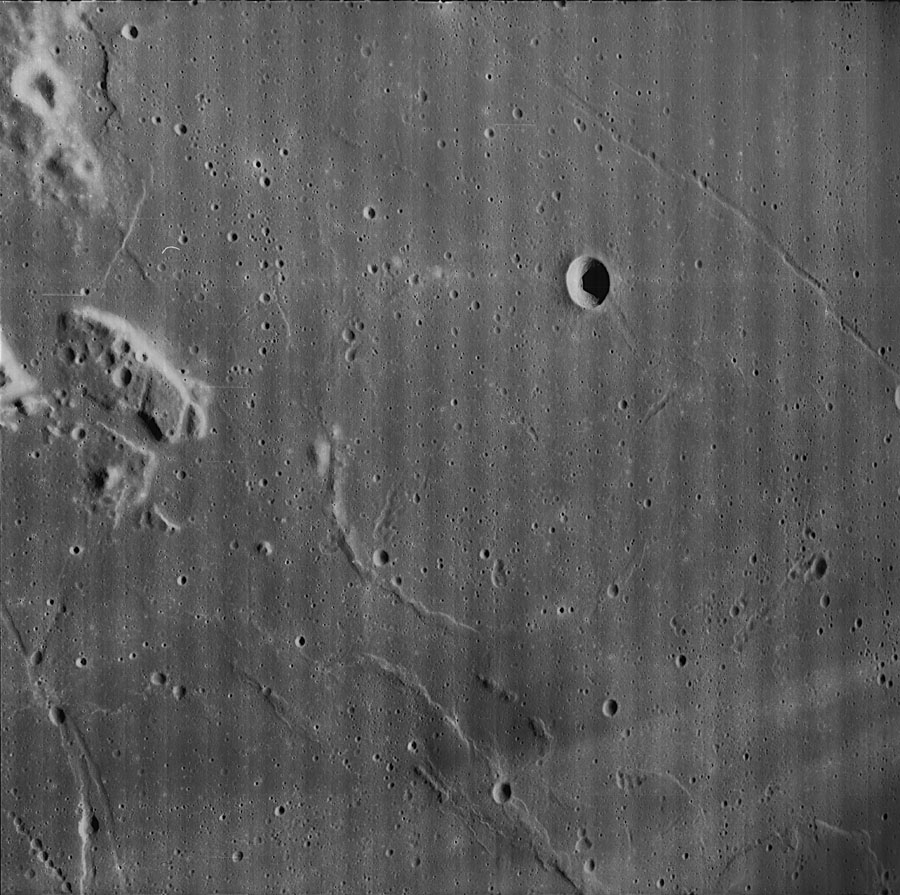Difference between revisions of "September 20, 2009"
(Created page with "__NOTOC__ =Little Treats= <!-- ws:start:WikiTextHeadingRule:0:<h1> --> <!-- ws:start:WikiTextLocalImageRule:6:<img src="/file/view/LPOD-Sept20-09.jpg/8988264...") |
|||
| Line 4: | Line 4: | ||
<!-- ws:start:WikiTextHeadingRule:0:<h1> --> | <!-- ws:start:WikiTextHeadingRule:0:<h1> --> | ||
<!-- ws:start:WikiTextLocalImageRule:6:<img src="/file/view/LPOD-Sept20-09.jpg/89882641/LPOD-Sept20-09.jpg" alt="" title="" /> -->[[File:LPOD-Sept20-09.jpg|LPOD-Sept20-09.jpg]]<!-- ws:end:WikiTextLocalImageRule:6 --><br /> | <!-- ws:start:WikiTextLocalImageRule:6:<img src="/file/view/LPOD-Sept20-09.jpg/89882641/LPOD-Sept20-09.jpg" alt="" title="" /> -->[[File:LPOD-Sept20-09.jpg|LPOD-Sept20-09.jpg]]<!-- ws:end:WikiTextLocalImageRule:6 --><br /> | ||
| − | <em>Lunar Orbiter V-042 image from [mailto:tychocrater@yahoo.com Chuck Wood]</em><br /> | + | <em>Lunar Orbiter V-042 image from [http://www.lpi.usra.edu/resources/lunarorbiter/frame/?5048 LPI Lunar Orbiter Photo Gallery]</em><br /> |
| + | <br /> | ||
| + | I wonder if anyone other than Danny Caes recognizes this area? Danny recently pointed out some Lunar Orbiter V images of the Secchi Rille, and in looking at them I came across this other LO-V view that illustrates a lot of small scale lunar landforms. For geologic context see Paolo Lazzarotti's great telescopic [http://www.lpod.org/?m=20070605 image]. Pieces of the Secchi Rille - really it should be rilles - are visible at the bottom left corner, including a fascinating crater chain rille. This image is [http://www.lpi.usra.edu/resources/lunarorbiter/images/preview/5048_med.jpg available] at much higher resolution which shows that unlike the Hyginus Rille crater chain, these pits do not occur within a rille-like channel. Here the pits are the rille. These could be collapses into a lava tube, or perhaps blowholes above a tube. Looking diametrically across the image is the Messier Rille which has hints of within-rille pits but they could be a few random impacts. Also notice that the rille is not continuous - its middle section is offset about a rille width from the ends. When a linear geologic feature has such offsets it is said to have <em>en echelon</em> components. On Earth, faults at right angles to the linear feature cause the offset, but I am not sure here. In the middle of the image is less than half of a semi-circular mare ridge which looks to be an almost completely gone ghost crater. Below the ghost rim is a circular dark area with three elongated hills. These hills probably were the volcanic vents for pyroclastic eruptions that deposited the halo. A similar chain of vents with a more muted ash deposit is near the top center of the image. Finally, two more features to notice - the almost parallel bright streaks are the famous rays from Messier - see Paolo's image. There are a few other intriguing small features that I'll leave you to find.<br /> | ||
| + | <br /> | ||
| + | <em>[mailto:tychocrater@yahoo.com Chuck Wood]</em><br /> | ||
<br /> | <br /> | ||
<strong>Related Links</strong><br /> | <strong>Related Links</strong><br /> | ||
Revision as of 19:46, 1 January 2015
Little Treats
Lunar Orbiter V-042 image from LPI Lunar Orbiter Photo Gallery
I wonder if anyone other than Danny Caes recognizes this area? Danny recently pointed out some Lunar Orbiter V images of the Secchi Rille, and in looking at them I came across this other LO-V view that illustrates a lot of small scale lunar landforms. For geologic context see Paolo Lazzarotti's great telescopic image. Pieces of the Secchi Rille - really it should be rilles - are visible at the bottom left corner, including a fascinating crater chain rille. This image is available at much higher resolution which shows that unlike the Hyginus Rille crater chain, these pits do not occur within a rille-like channel. Here the pits are the rille. These could be collapses into a lava tube, or perhaps blowholes above a tube. Looking diametrically across the image is the Messier Rille which has hints of within-rille pits but they could be a few random impacts. Also notice that the rille is not continuous - its middle section is offset about a rille width from the ends. When a linear geologic feature has such offsets it is said to have en echelon components. On Earth, faults at right angles to the linear feature cause the offset, but I am not sure here. In the middle of the image is less than half of a semi-circular mare ridge which looks to be an almost completely gone ghost crater. Below the ghost rim is a circular dark area with three elongated hills. These hills probably were the volcanic vents for pyroclastic eruptions that deposited the halo. A similar chain of vents with a more muted ash deposit is near the top center of the image. Finally, two more features to notice - the almost parallel bright streaks are the famous rays from Messier - see Paolo's image. There are a few other intriguing small features that I'll leave you to find.
Chuck Wood
Related Links
Rükl plate 48
COMMENTS?
Click on this icon File:PostIcon.jpg at the upper right to post a comment.




